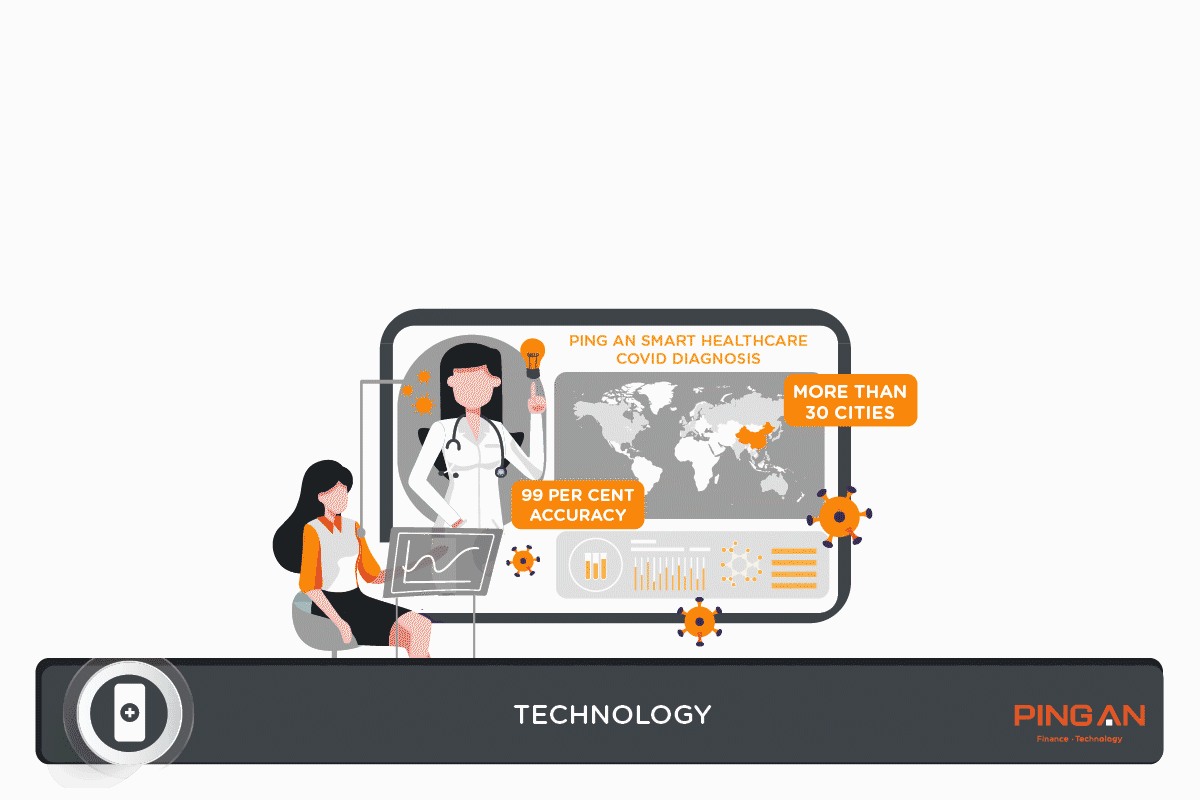Insights, Events and Videos
China plans to build a healthy society by 2030. Research and development in advanced technologies will drive — and unify — the entire healthcare ecosystem
When Covid-19 spread beyond Wuhan in early 2020, AI technologies played a vital role in China’s containment strategy, helping the nation of 1.4bn people to bring the virus under control.
At ground zero in Wuhan, an AI-driven CT scanning tool developed by Ping An Smart Healthcare performed Covid-19 diagnosis in 15 seconds with more than 90 per cent accuracy, easing pressure on healthcare workers. Meanwhile, Ping An Health Technology Research Institute deployed big data systems to predict infection trends in more than 30 cities with 99 per cent accuracy, enabling rapid-response medical resource allocation that saved lives.
The pandemic and its containment in China have underscored how the country may pivot to digital healthcare faster than the West, leapfrogging many legacy stages of development. China has a powerful track record in this: skipping the PC era, it eagerly embraced mobile technologies such as contactless payments, social messaging and the multi-purpose super apps that are driving the post-Covid digital economy.
Now the pandemic has thrust digital healthcare into the spotlight, with Covid-19 accelerating the need for AI diagnostics, telemedicine, Internet hospitals and remote surgery. China is poised to take a leading global role in these fields and Ping An Group is committed to fostering its success.
"We believe that the Covid-19 situation has actually accelerated and increased the potential of what we have started about seven years ago in Internet healthcare," says Jessica Tan, Co-CEO, Ping An Group.
The healthcare ecosystem’s “medical brain”
Ping An’s role in supporting China’s plan is based on a core concept: a healthcare ecosystem that integrates all stakeholders — government, patients, providers, medical professionals and payers — in vertical and horizontal integration. In a country as large and complex as China, only smart integrated networks can ensure a healthy society by 2030, and groundbreaking research will chart the way forward.
The Ping An healthcare model is built on digital platforms that enable horizontal and vertical integration. Ping An Good Doctor, for example, offers telemedicine that connects patients and providers across the healthcare landscape, with online-offline symbiosis. Ping An Smart Healthcare provides vertical solutions for the government to optimise the core resources of hospitals, doctors and pharmacies.
The 2019 Future Health Index, produced by Dutch multinational Philips, says China enjoys a huge lead among 15 countries in adopting health tech. Platforms such as Ping An Good Doctor and Ping An Smart Healthcare help to explain why. Ping An Good Doctor, for example, has more than 373m registered users and partners with more than 3,000 hospitals.
And there is a powerful force propelling Ping An’s healthcare ecosystem vision: the group’s world-leading R&D capability in global healthcare, which fuels and coordinates all limbs of the Ping An Group’s digital healthcare organism.

Ping An’s dedicated research centre brings together top minds from biotechnology, machine learning, data science, genomics and other fields, leveraging the group’s leadership in AI and big data and driving the evolution of its healthcare platforms.
Ping An’s medical technology is built on a network of five databases. Together they form the world’s biggest medical database.
- Disease: This database has information on 30,000 diseases in the ICD (Classification of Diseases) and includes root causes and symptoms.
- Treatment: Contains 33m pieces of medical literature (5m in Chinese and 28m from overseas) and 1,700 prescriptions, including medical pathways and treatments.
- Drug: More than 180,000 drug instructions with details of manufacturers, target populations, precise dosages, side effects and retail prices.
- Doctor: Over 1m doctor profiles, including world top-ranked practitioners, with information on their hospitals, specialities and research backgrounds.
- Patient: More than 1bn medical records detailing medications, treatment histories and demographic information.
Ping An converts this world-leading trove of medical data into real-time solutions through machine learning capabilities that it has honed over decades of developing AI solutions in banking, risk management and smart cities.
“Simply putting together data has no value,” says Xie Guo Tong, Ping An Group’s chief healthcare scientist, at a recent investor day on healthcare. “We develop algorithms to dive into each of the five databases to mine the data and convert it into useful information.” AI is fast transforming medical areas including disease prediction, pathology diagnosis, clinical decision support and disease management.
Ping An’s healthcare R&D has proven its worth time and time again. The group ranks No. 1 globally in healthcare patent applications and it has won first place in six international medical imaging competitions. Crucially, Ping An medical research delivers concrete results, with its technology used nearly 300m times in real-life tasks.
For example, AskBob Doctor Workstation, an AI-based diagnosis and treatment assistant tool, has been deployed 33m times for medical decision support, patient follow-up and patient education since its launch in June 2019.
“We are going to big cities, hospitals, and doctors. They are now already using this technology application day in and day out,” says Xie. “Our Smart Healthcare solutions are supported by globally leading technology capabilities and medical databases, computation and AI algorithms.”
Building healthcare’s future with R&D commitment
Ultimately, the key to Ping An’s healthcare impact is R&D intensity. The group dedicates 1 per cent of annual revenues (currently Rmb1.7tn) to developing innovative technologies, with healthcare a top priority. Ping An today is committed to allocating up to 30 per cent of its five-year Rmb100bn R&D budget to health solutions.
Looking further ahead, Ping An aims to contribute to the futuristic-sounding healthcare solutions that will benefit the entire world, and in which China is also poised to take leadership. These include smart cities in which the environment is digitally adjusted to promote health and wellbeing, technology that crunches genetic data to pre-empt diseases decades before they become a problem, and 5G-enabled robotic surgery that can save lives in pandemics or earthquakes.

